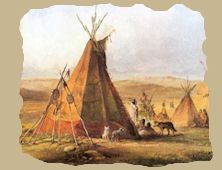|
|
Historical Collections of Georgia
Pudney & Russell, 1854, c1853
General William McIntosh
Biographical Sketches Of Distinguished Indians: Page 170-173
Tustennuggee Emathla, A Creek Warrior
Biographical Sketches Of Distinguished Indians: Page 174
Paddy Carr, A Creek Interpreter
Biographical Sketches Of Distinguished Indians: Page 169
John Ridge, A Cherokee Chief
Biographical Sketches Of Distinguished Indians: Page 168
Major Ridge
Biographical Sketches Of Distinguished Indians: Page 167
Ho-po-eth-le-yo-ho-lo, A
Creek Chief
Biographical Sketches Of Distinguished Indians: Page 165-166
General William Augustus Bowles
Biographical Sketches Of Distinguished Indians: Page 154-163 Pages 163-164
General Alexander McGillivray
Biographical Sketches Of Distinguished Indians: Page 154-163
Timpoochee Barnard, A Uchee Warrior
Biographical Sketches Of Distinguished Indians: Page 166
 |
Ho-po-eth-le-yo-ho-lo,
A Creek Chief
The Creek Nation was divided into the upper
and lower towns, over which the Big Warrior was chief, under whom Ho-po-eth-le-yo-ho-lo
held the rank of principal councilor, or speaker of the councils. His
influence was so great, that the questions submitted to the council were
generally decided |
| according to his will. The great
council-house of the upper towns was at Tuckabatchee, where the Big
Warrior resided,
and near which was the residence of Ho-po-eth-le-yo-ho-lo.
Of the youth of Ho-po-eth-le-yo-ho-lo
little is known, except that he was regarded as a Youth of promise. The
first public service which he rendered was at the council at the Indian
Springs, to which he was sent to counteract the influence of McIntosh. It
is said he executed his mission with great fidelity.
During the contest between the United States and the
Seminoles, in 1836, Saugahatchee, one of the towns of Ho-po-eth-le-yo-ho-lo
district, was the first to revolt. The warriors rushed out and murdered
all the travellers who fell in their way. Upon hearing this intelligence,
Ho-po-eth-le-yo-ho-lo immediately placed himself at the head of the
warriors of his own town, marched upon the insurgents, burned their
village, and having captured some of their men, delivered them over to the
military, by whom they were imprisoned; at the request of Governor Clay,
of Alabama, he called a council of his warriors, and proposed to Lead them
against the hostile Creeks. Within five days they were encamped at
Tallahassee, the then head-quarters of Major General Jesup, to whom a
formal tender of their services was made, which were accepted, and Ho-po-eth-le-yo-ho-lo
appointed commander of the whole Indian force, with the rank of colonel.
The army was marched to Hatcheehubbee, but the hostiles
surrendered. He continued to be opposed to the last to emigration. In 1834
or '35 he went to Texas, and purchased a large tract of land for $80,000;
but the Mexicans being jealous of him, and some doubts as to the validity
of the title existing, his intention was abandoned, with the loss of
$20,000. It is believed that he had but one wife. Two of his daughters are
said to have been beautiful. |
Native American Nations
|

